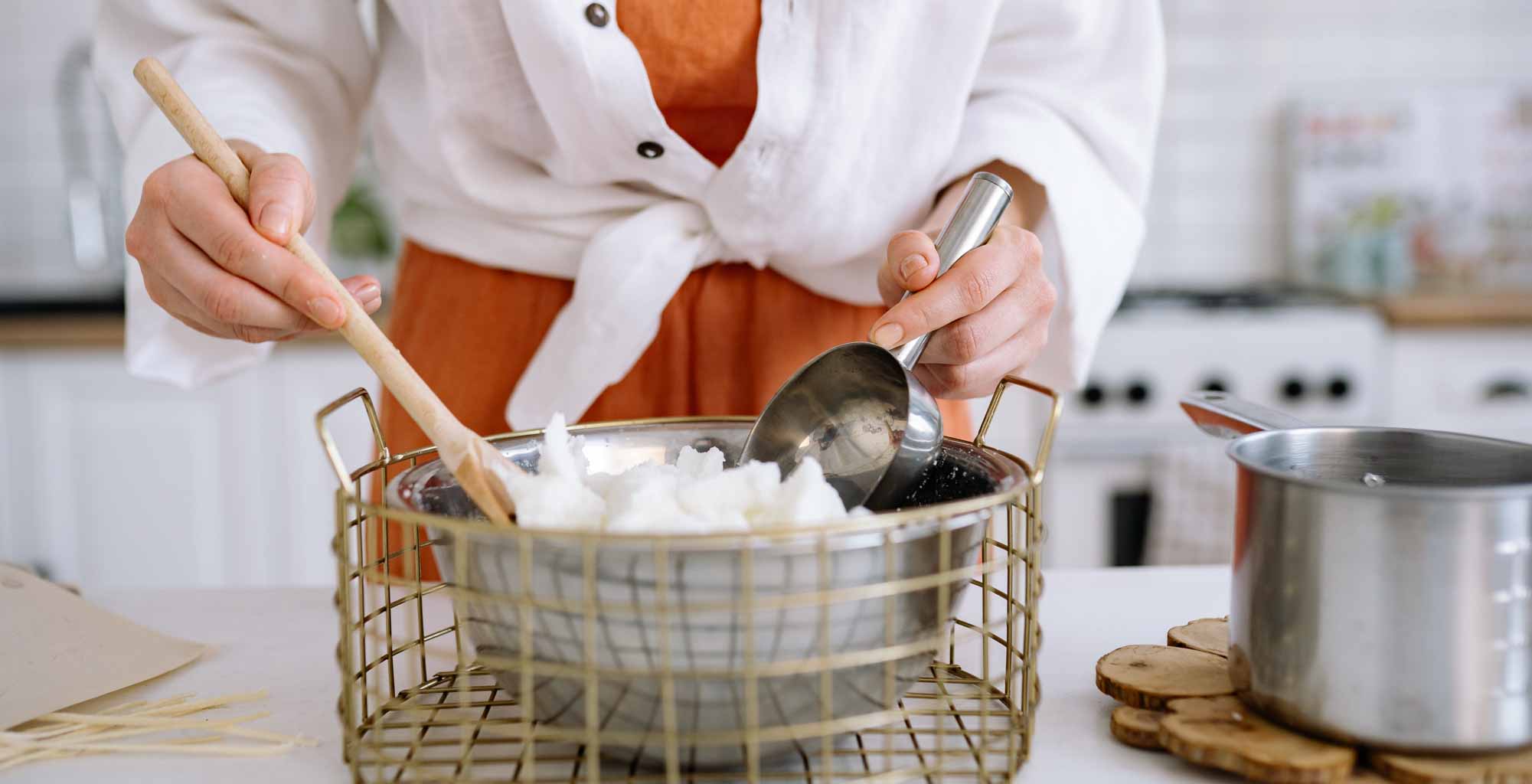We do shipping of our products WORLDWIDE.
ALL OUR PRODUCTS ARE PACKED BY VISUALLY HANDICAPPED
100% NATURAL PLANT SCENT ESSENTIAL OILS

Selecting the suitable wax is the first step in creating scented candles. Since wax gives life to a candle, choosing the proper wax is essential. Now that many different types of waxes are available, the challenging aspect is deciding which is best for scented candles.
We have enumerated the benefits and drawbacks of the most popular types of waxes, including paraffin, soy, beeswax, rapeseed, and coconut wax, so you may choose the one that will work best for you at home or elsewhere without harming the environment.
As a byproduct of soybeans, soy wax is vegan, biodegradable, all-natural, and environmentally benign. Compared to other waxes, it burns cleaner and produces less soot because of its slower burn period. Furthermore, it is more affordable. Moreover, many people love soy wax’s softer, milder aroma because it doesn’t overpower our sensitive noses.
Paraffin wax is made from the leftovers of the oil industry. In the candle industry, it’s widely used because it’s affordable and easily accessible. In addition to being convenient, it has a strong aroma and vibrant color, and because of its melting point, it can be shaped into various shapes to create different kinds of candles. However, because of the composition of the wax, paraffin wax is seen as less sustainable and environmentally benign. It is said to release unhealthy volatile organic compounds (VOCs). Furthermore, if paraffin wax is not maintained correctly, it burns more quickly and emits soot.
Paraffin wax is made from the leftovers of the oil industry. In the candle industry, it’s widely used because it’s affordable and easily accessible. In addition to being convenient, it has a strong aroma and vibrant color, and because of its melting point, it can be shaped into various shapes to create different kinds of candles. However, because of the composition of the wax, paraffin wax is seen as less sustainable and environmentally benign. It is said to release unhealthy volatile organic compounds (VOCs). Furthermore, if paraffin wax is not maintained correctly, it burns more quickly and emits soot.
Like soy wax, beeswax is a sustainable and environmentally friendly wax derived from honey-making processes, bees, and honeycomb hives. It is one of the oldest types of wax. Honey’s inherent scent contributes to beeswax’s ability to exude a mild sweetness and create air-purifying ions. Despite this, because of its unique honey fragrance, which clashes with essential oils, it is rarely utilized for scented candles.
It is more challenging to find rapeseed wax, also called canola wax, because the candle industry is still relatively new to it. It is a low-carbon, locally derived product extracted from the yellow flowers of mustard- and cabbage-like plants, but it is also quite costly. It emits a potent aroma that lingers for a while and burns slowly.
The newest innovation in the candle industry’s adoption of sustainable practices, incorporating the harvesting of coconuts, is coconut wax. The coconut flesh or oil is combined with soy wax to create coconut wax. Coconut wax is environmentally friendly and retains colors and fragrances beautifully, making it an excellent choice for ornamental candles that improve interior design. It releases less soot and burns cleaner than beeswax and soy wax. Regretfully, coconut wax is pricey because coconuts are used for various purposes.
That is a ton of information, wow. Which wax is, hence, ideal for scented candles? It would help to base your answer on your preferences after weighing each candle wax type’s advantages and disadvantages.
At Qualis Nutri, we prioritized the demands of our consumers and our environment, so we chose soy wax for our scented candles. You can, therefore, be sure that anytime you burn one of our candles, your family’s health will improve, even that of your furry pals! Not to be overlooked, you also treat the earth kindly. ♡
Recent Comments